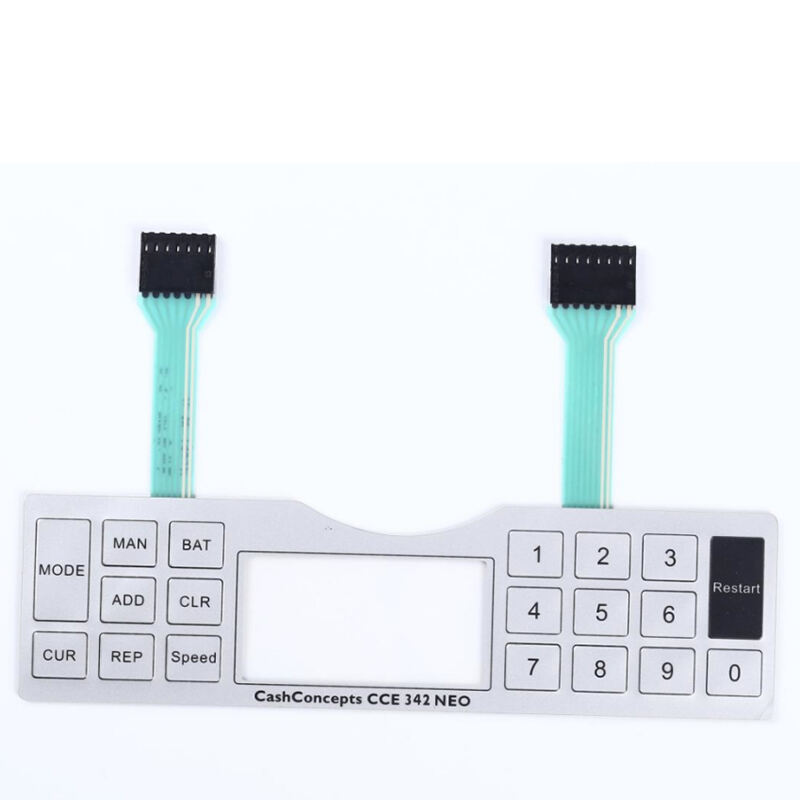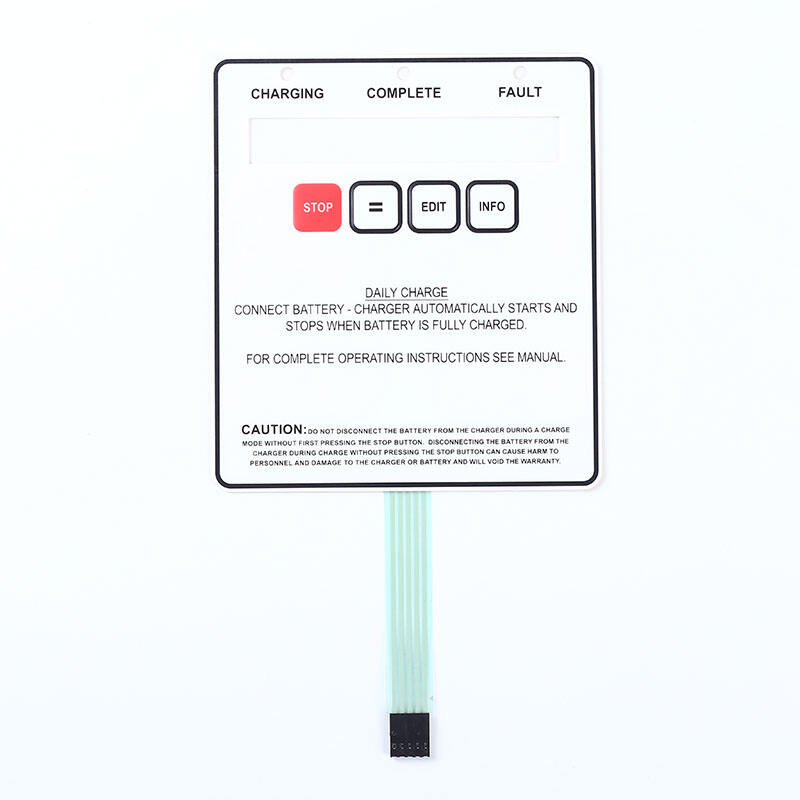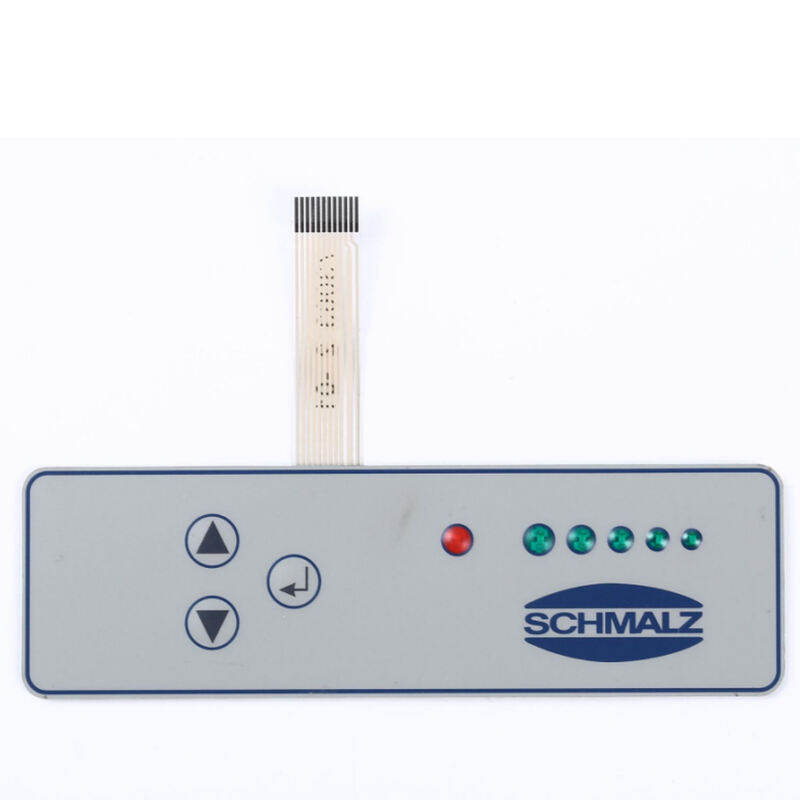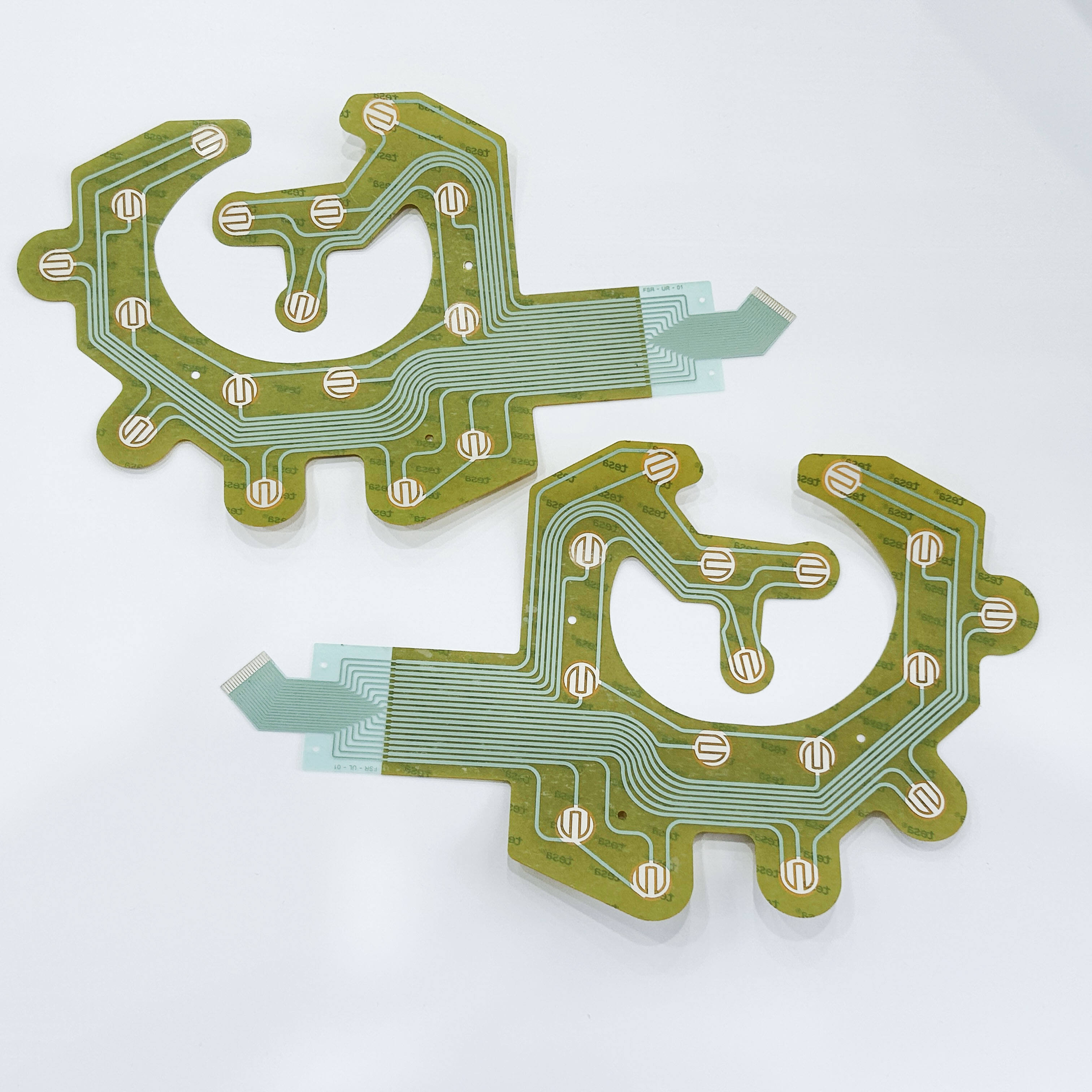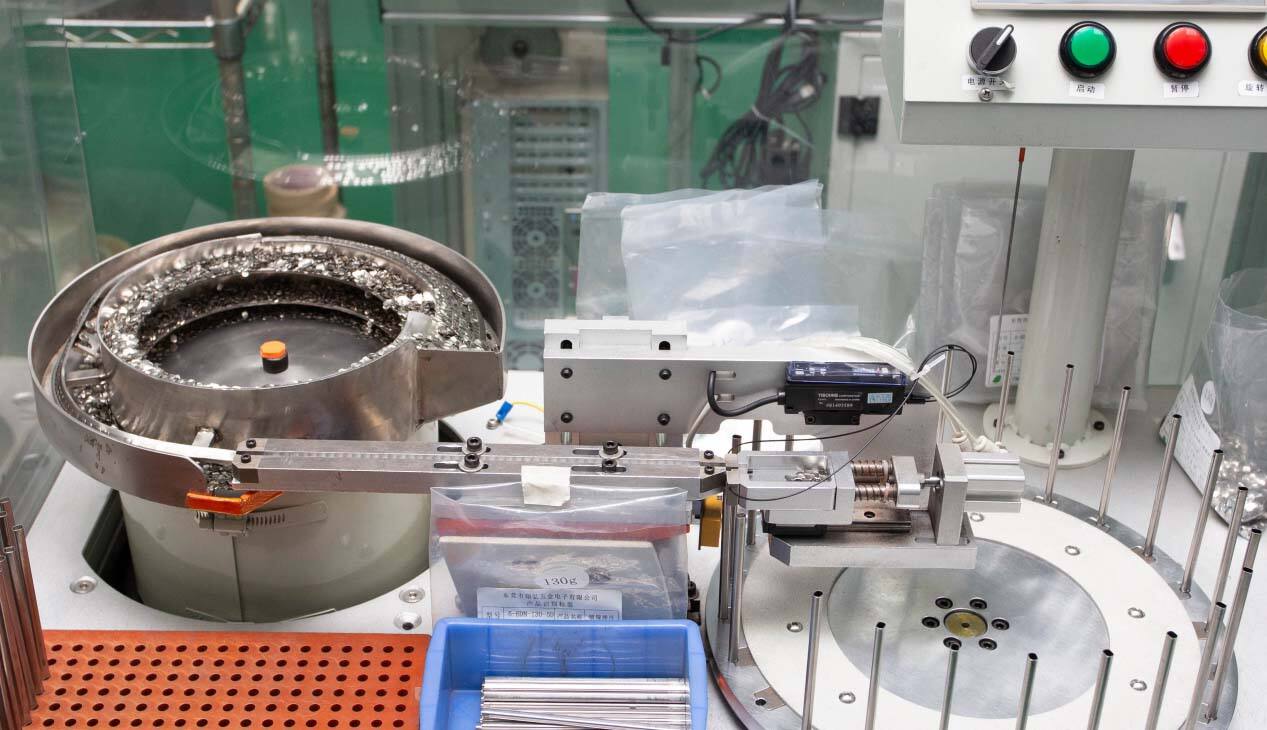막 스위치에서 사용되는 다양한 유형의 유연 회로에 대해 알고 계십니까?
메모리 스위치에서 유연 회로의 주요 기능
동적 키패드 구성 가능하게 하기
유연한 회로는 제조사가 특정 사용자 요구에 맞춘 키패드를 설계할 수 있도록 동적 키패드 구성을 만드는 데 필수적입니다. 이 커스터마이제이션은 더 직관적인 사용자 인터페이스를 제공하여 장치와의 전체 상호 작용을 향상시킵니다. 유연한 회로를 사용하면 제조사는 각 구성이 사용자의 특정 요구 사항과 선호도를 충족하도록 레이아웃과 기능을 조정할 수 있습니다. 최근 실증 연구에서는 소비자 전자 제품에서 커스터마이즈 가능한 인터페이스를 제공할 경우 사용자 만족도가 30% 증가하는 것으로 나타났습니다. 이는 기능적이고 사용자 친화적인 키패드를 설계할 때 유연성의 중요성을 강조하며, 메모리 키보드를 최고 중 하나로 자리매김하게 합니다.
타클 돔 스위치 시스템과의 통합
유연 회로와 촉각 돔 스위치 시스템의 통합은 기기 사용성에 있어 중요한 개선을 가져옵니다. 촉각 돔 스위치는 사용자가 더 상호작용적인 경험을 위해 종종 찾는 물리적 피드백 기능을 제공합니다. 이를 유연 회로 설계에 통합함으로써 제조업체들은 의료 기기에서 소비자 전자 제품에 이르는 다양한 응용 분야를 강화할 수 있습니다. 학술 자료의 연구는 촉각 피드백과 향상된 사용자 성과 지표 사이에 직접적인 상관관계가 있음을 확인합니다. 유연 회로와 촉각 돔 스위치 간의 이러한 시너지는 사용자 인터페이스 설계가 기능과 사용자 만족도와 함께 진행되는 환경을 조성합니다.
막 키보드 작동을 위한 전기 경로
플렉시블 회로는 멤브레인 키보드의 일관된 반응성에 필수적인 안정적인 전기 경로를 구축하는 데 중요한 역할을 합니다. 이러한 혁신적인 디자인은 다층 회로를 통합하여 좁은 공간에 다양한 기능을 제공합니다. 이러한 독창적인 디자인은 멤브레인 키보드가 완벽한 사용자 경험을 제공할 수 있도록 하는데, 이는 오늘날 경쟁이 치열한 시장에서 점점 더 중요해지고 있습니다. 전자 산업 보고서의 통계에 따르면, 잘 구축된 전기 경로는 신호 손실을 최대 25%까지 현저히 줄일 수 있습니다. 이는 기기의 효율적인 작동과 사용자 기대 충족을 보장하는 데 있어 중요한 진전을 의미하며, 현대 디자인에서 플렉시블 회로의 중요성을 더욱 강조합니다.
회로 구동 스위치 설계를 위한 핵심 구성 요소
메탈 돔 어레이 vs 전통적 스위치
메탈 돔 어레이들은 수명과 신뢰성 측면에서 전통적인 메카니컬 스위치보다 중요한 이점을 제공합니다. 그들의 견고한 구조는 장기 사용이 필요한 현대 기기에서 더 높은 내구성을 가져옵니다. 또한, 메탈 돔 어레이의 컴팩트한 디자인은 오늘날의 전자제품에서 점점 작아지는 크기에 필수적인 더 얇은 프로필을 가능하게 합니다. 산업 분석에 따르면, 메탈 돔 어레이를 탑재한 기기는 전통적인 스위치를 사용하는 기기보다 수명이 최대 세 배 길어질 수 있어, 일관된 성능과 수명을 보장하려는 회로 설계에는 우수한 선택입니다.
그래픽 오버레이들은 인터페이스 보호자로서의 역할을 합니다
그래픽 오버레이들은 회로 구동 스위치의 기능을 보호하고 향상시키는 중요한 구성 요소입니다. 이들은 아래쪽 회로에 대한 장식적 매력과 보호 장벽이라는 두 가지 역할을 합니다. 내구성이 뛰어난 재료를 사용하면 그래픽 오버레이는 스위치 표면의 마모로부터 보호하여 장치 수명을 연장시킵니다. 보고서에 따르면 적절히 사용될 경우 그래픽 오버레이는 막 스위치의 작동 수명을 최대 40%까지 연장할 수 있어, 까다로운 환경에서 인터페이스 보호자로서의 효율성을 입증합니다.
방수 애플리케이션용 회로 최적화
수분에 노출되는 장치가 있는 산업에서 방수 애플리케이션을 위한 회로 최적화는 점점 더 중요해지고 있습니다. 방수 기능을 통합한 전문적인 회로 설계는 혹독한 환경에서도 기능성을 유지할 수 있도록 보장합니다. 코닝 코팅과 밀폐형 설계를 구현하면 회로의 수분에 대한 내구성이 크게 향상되고 손상 위험이 줄어듭니다. 전문가 분석에 따르면 의료 및 산업 장치 부문에서 방수 스위치 애플리케이션에 대한 수요가 급증하고 있으며, 이는 이러한 시장에서 방수 회로 최적화의 중요성을 강조합니다.
유연 회로용 재료 고려사항
PET 기판과 폴리이미드층 비교
PET와 폴리아미드 물질을 선택하는 것은 회로의 유연성과 내구성에 큰 영향을 미친다. PET 기판은 비용 효율적인 솔루션을 제공하지만, 특히 열 저항에 제한이 있습니다. 이는 혹독한 환경에서 성능에 영향을 줄 수 있습니다. 반면 폴리아미드 층은 열 안정성이 뛰어나고, 항공우주 및 다른 까다로운 응용 분야에서 선호되는 선택이 됩니다. 시장 조사에 따르면 항공 우주에서 폴리아미드 회로에 대한 선호도가 증가하고 있으며, PET 기판보다 극단적인 조건에 더 잘 견딜 수 있다는 것입니다.
도전 잉크 선택 기준
적절한 도전성 잉크를 선택하는 것은 유연 회로에서 최적의 성능을 발휘하기 위해 매우 중요합니다. 이는 운영 효율성과 수명에 모두 영향을 미치기 때문입니다. 점도, 경화 시간, 도전성과 같은 여러 매개변수가 잉크의 효과에 중요한 역할을 합니다. 업계 지침에서는 종종 고부하 응용 프로그램에 맞춤화된 특정 잉크를 사용하여 성능을 향상시키도록 권장합니다. 예를 들어, 시장에서 높은 전기 도전성과 강력한 산화 저항력 때문에 도전성 실버 잉크가 선호되며, 이는 의료 기기와 소비자 전자 제품과 같은 중요한 부문에 적합합니다.
내구성 시험 방법
효과적인 내구성 테스트는 유연한 회로가 다양한 환경 조건과 기계적 스트레스를 견딜 수 있음을 보장합니다. 일반적인 테스트 방법에는 열 사이클링, 습도 노출, 그리고 유연성 테스트가 포함되며, 각각이 제품의 수명을 정확히 예측하는 데 도움을 줍니다. 연구는 일관되게 엄격한 테스트 프로토콜이 실제 응용에서 고객 만족도와 제품 수명에 밀접하게 연관되어 있음을 보여줍니다. 유연 전자기기가 일상 제품에 더욱 통합됨에 따라 포괄적인 테스트를 통해 그들의 신뢰성을 확보하는 것이 필수적입니다.
막 기술에서의 차세대 응용
현대 인터페이스에서의 LED 통합
메모리 스위치에 LED를 통합함으로써 어두운 환경에서 장치의 사용성을 혁신적으로 향상시켰습니다. 가시성을 개선하여 기능성을 유지하면서도 디자인의 자유를 제공합니다. 이는 혁신적인 제품을 만드는 데 중요한 요소로, 시각적 매력과 실용성을 모두 갖추어야 합니다. 실제로 연구에 따르면 LED 기능이 있는 제품은 강화된 미적 가치와 기능성 덕분에 판매량이 25% 증가하는 것으로 나타났습니다. 이 경향은 외관의 매력이 실용성을 보완하는 소비자 전자제품 및 자동차 디자인 산업에서 특히 두드러집니다.
복잡한 장치를 위한 유연한 회로 솔루션
소프트 서킷 솔루션은 특히 웨어러블 기기와 헬스케어 분야에서 필요한 복잡하고 소형 장치에 대한 유연성을 제공합니다. 이러한 회로는 다양한 표면에서 신뢰할 수 있는 성능을 유지하면서 작은 공간에 원활하게 적합할 수 있습니다. 독특한 설계 및 운영 제약 조건을 수용함으로써, 소프트 서킷은 유연성과 기능성이 모두 요구되는 장치에서 필수 불가결한 요소가 되었습니다. 산업 전망에 따르면, 고급 웨어러블 기술과 스마트 의료 기기의 수요 증가로 인해 향후 몇 년 안에 소프트 서킷의 응용이 40% 이상 성장할 것으로 예상됩니다.
맞춤형 백라이트 스위치 컨셉
사용자 참여와 만족도를 크게 높이는 맞춤형 백라이트 디자인에 대한 수요가 증가하고 있습니다. 유연한 회로를 활용하여 이러한 디자인은 모바일 폰에서 부엌 가전까지 다양한 응용 분야에 쉽게 통합될 수 있습니다. 이 커스터마이제이션을 통해 사용자는 자신의 선호도에 따라 시각적 출력을 조정할 수 있어 전체 사용자 경험을 향상시킵니다. 시장 조사에 따르면 소비자의 15%는 자신이 커스터마이즈할 수 있는 인터페이스를 선호하는 것으로 나타나 더 상호작용적이며 사용자 중심의 디자인 전략으로의 변화를 보여줍니다. 이 트렌드는 특히 독특하고 매력적인 소비자 제품을 만들기에 매우 유리합니다.
이러한 첨단 기술들을 통합함으로써 제조업체와 설계자들은 단순히 기능적 요구 사항을 충족하는 것을 넘어 사용자 기대를 초과하는 제품을 만들 수 있으며, 이는 막기술 응용 분야에서 혁신적인 발전의 기반을 마련합니다.
제품 소개: 엔지니어링된 막 솔루션
심한 환경용 방수 막 스위치
방수 막 스위치는 해양 및 산업 현장과 같은 도전적인 환경에서 최적으로 작동하도록 전문적으로 제작됩니다. 이러한 스위치는 수분과 먼지 침입으로부터 보호하기 위해 고급 밀봉 기술을 사용하여 신뢰성과 내구성을 확보합니다. 업계 동향에 따르면 방수 스위치가 막 기술 시장에서 중요한 부문이 되고 있어 그 중요성이 점점 커지고 있습니다. 이 견고한 설계는 심한 요소로부터 보호가 필요한 응용 프로그램에 이상적입니다.
PET 기반 저프로파일 스위치 시스템
PET 기반 스위치 시스템은 경량 및 소형 설계 덕분에 점점 인기가 높아지고 있으며, 소비자 전자기기에 적합합니다. 이러한 시스템의 낮은 프로파일 특성은 성능이나 사용자 만족도에 중요한 촉각 피드백을 저하시키지 않으면서 공간을 절약할 수 있게 해줍니다. 기술 보고서에서는 PET 솔루션을 도입하면 생산 비용이 줄어들면서도 더 나은 기능성을 제공한다고 강조합니다. 이는 비용 효율성과 제품 효과성을 균형있게 유지하려는 제조사들에게 있어 PET 기반 스위치가 현명한 선택임을 의미합니다.
LED 강화 촉각 피드백 모델
LED 강화된 촉각 피드백 모델들은 시각적 요소와 촉각적 요소를 결합하여 전자 장치의 사용자 인터페이스를 혁신합니다. 이 기술은 사용자 상호 작용을 향상시키기 위해 즉각적이고 명확한 피드백을 제공하며, 유연한 회로에 LED를 통합하여 이를 실현합니다. 데이터에 따르면 이 기술을 활용한 장치는 특히 기술 중심 시장에서 더 높은 채택률을 보여주며, 사용자 중심 설계 개선의 효과성을 입증합니다.
초박형 소프트 서킷 구성
초박형 소프트 서킷 구성은 특히 헬스케어와 웨어러블과 같은 급속히 발전하는 분야에서 다양한 혁신적인 응용을 가능하게 합니다. 이들은 전기적 안정성을 유지하면서 다양한 표면에 굽히고 적응할 수 있는 능력이 미니어처 전자 장치를 개발하는 데 있어 중요한 역할을 합니다. 예측에 따르면 산업계가 점점 더 소형화되고 효율적인 기술적 솔루션을 추구함에 따라 이러한 구성에 대한 수요는 계속 증가할 것으로 보이며, 이는 장치 소형화의 트렌드에서 중요한 요소로 자리잡게 됩니다.
핫 뉴스
-
스위치 패널 샘플 지침
2023-12-14
-
핫포트 슬라이스가 눌러서 뜨지 않는 이유를 아세요?
2023-12-14
-
가이드 라이트란 뭐죠? 홍마오는 가이드 라이트 시트를 생산하는 회사입니다.
2023-12-14
-
스위치를 만들기 위해 몇 개의 룰러가 필요합니까?
2023-12-14

 EN
EN
 AR
AR
 FR
FR
 DE
DE
 IT
IT
 JA
JA
 KO
KO
 PT
PT
 RU
RU
 ES
ES
 VI
VI

